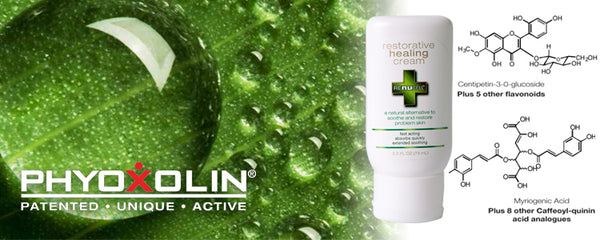
Traditional Medicine In A Bottle
Share
Traditional medicine: “the knowledge, skills and practices based on the theories, beliefs and experiences indigenous to different cultures, used in the maintenance of health and in the prevention, diagnosis, improvement or treatment of physical and mental illness.”
In this context, natural plant-based therapeutic products are becoming the first choice for informed consumers, who are seeking natural, effective and safe alternatives for healthy skin.
With broad access to information, customers in need of solutions for skin ailments are carefully researching the origins of the ingredients, and even the social responsibility commitment of the brands. Thanks to informed consumers with heightened expectations, smaller brands that are genuinely dedicated to providing relief are thriving despite the large budgets of traditional legacy brands.

In skincare, small companies have taken the route of exploring and researching the therapeutic and biochemical properties of new botanical ingredients as well as creating optimized technology to get more powerful extracts in order to surpass cosmetic purposes. The results are outstanding and we now have unique, high quality and affordable products at our fingertips (literally!) that truly nurture skin and provide consumers natural relief.
There are hundreds of plants with therapeutic properties around the globe that have been used for centuries by cultures past and present to take care of skin. Active ingredients of these plants have been isolated and are now being used in commercial creams, shampoos, lotions, toners, and all kinds of skincare products. In China, rice has been used in facial makeup and to wash the skin since the 16th century, and now there are over 100 products based on this seemingly simple ingredient. In South America, the “Sangre de Drago” (Croton lechleri) sap is used directly from the tree to cicatrize cuts, and Ungurahua Oil (Oenocarpus batahua) has been used to promote healthy hair and scalps.

In Australia, Centipeda cunninghamii is one of those plants. It has a long history of traditional use as a medicinal plant for treating skin wounds, infections and inflammation, and has captured the attention of Australian researchers at Southern Cross University and the Australian Government’s Rural Industries Research and Development Corporation. These institutions, in collaboration with the industry, have made significant advances in the identification of the plant’s chemistry and biological activity, which has generated further international interest in high-quality Centipeda cunninghamii extracts and formulated end-use products.

Research projects have also included identifying key agronomic, harvest and postharvest issues, selection of superior genetic material, identification of production and post-production practices to optimize yield and quality, and the generation of data for establishment of an industry standard for the extracts.
Research is ongoing and exclusive cosmetic and therapeutic products of some Australian, American, and English brands use different patented extracts of the Centipeda cunninghamii plant, such as Phyoxolin, Plantolin and Phytoplenolin. These extracts provide a natural synergy of anti-inflammatory and antioxidant activity, allowing consumers to enjoy a higher concentration of the same medicinal properties enjoyed by the Aboriginal people for centuries, all in one bottle.

Learn More
- World Health Organization - Traditional Medicine
- More Hope In A Jar? The Anti-Aging Skin Care Promise
- More Shoppers Doing Research Online Before Buying
- Phytochemical studies and bioactivity of Centipeda and Eremophila species
- Centipeda cunninghamii, an australian traditional medicinal plant
- That ‘Old Man Weed’
- Bio Actives Export Pty Ltd.